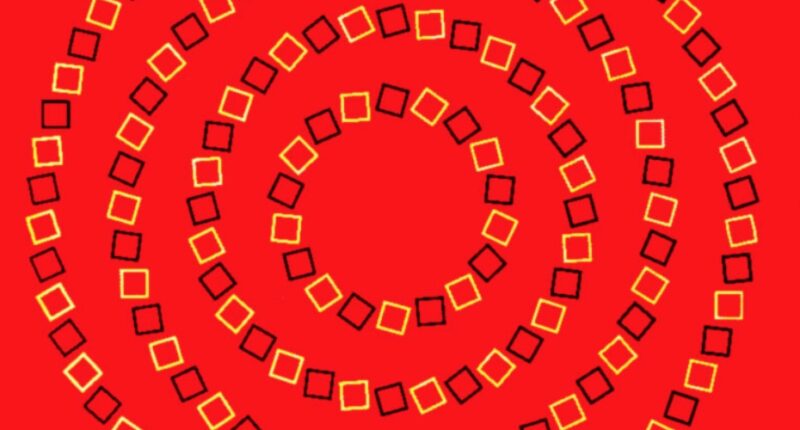THIS mind-boggling optical illusion can make users feel dizzy if they stare at it too long.
Dubbed Pinna’s Intertwining illusion, the image was created by Baingio Pinna of the University of Sassari in Italy.

Pinna’s Intertwining illusion was created by Baingio Pinna of the University of Sassari in Italy[/caption]
What is Pinna’s Intertwining illusion?
In Pinna’s optical illusion, users can see several circles made from smaller yellow and black squares.
While staring at the visual, the circles appear to spiral and intersect with one another.
But in fact, they are an orderly set of circles that do not touch each other at all.
Read more on illusions
What’s going on with this illusion?
Like many others, this illusion works by utilizing color and shape to trick the human mind.
The placement of the squares, which alternates in color from circle to circle, creates a contrast that makes your brain believe they are intersecting.
It also creates an illusory motion effect which makes your mind feel like the circles are rotating.
One optical Illusion expert explains: “The scale and spacing of the squares are just right to get that alignment, and as a result, the effect enhances the inward turning, spiralling effect due to the orientation of the squares.”
Most read in Tech
“The fringes combine to give an effect a little like interfering waves. The illusion seems to be bamboozling processes that are usually superbly effective at filtering out the key information about edges and their orientation in the visual field.”
“To a much greater extent than we realise, we infer global configurations from what we see just in the central, foveal area of the field of view. That also seems to be the case with impossible 3-dimensional shapes.”
Other similar illusions include those of Akiyoshi Kitaoka, a professor of psychology in Kyoto, Japan.
One of his most famous illusions, the Rotating Snakes consists of circular snakes that appear to rotate spontaneously in your peripheral vision.

An optical illusion by Akiyoshi Kitaoka, a professor of psychology in Kyoto, Japan.[/caption]
Read More On The Sun
However, when you focus on one circle, the rotation appears to stop.
This is likely caused by unconscious rapid eye movements and blinking, per The Guardian.











